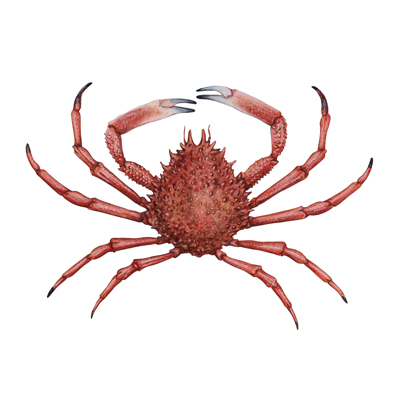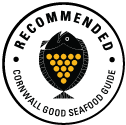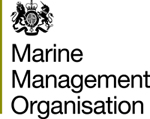

Spider crabs are caught by inshore fishermen using pots or nets. Studies by Cornwall Inshore fisheries and Conservation Authorty show that this fishery appears to be sustainable. Potting for spider crabs has minimal impact on the environment and pot caught spider crabs are recommended by Cornwall Good Seafood guide. Net caught crab is arguably less sustainable as there are issues with by catch of non target species such as crawfish, rays, cetaceans and sharks. Minimum landing sizes and licences for shell fishing are set by Cornwall Inshore Fisheries and Conservation Authority (CIFCA) who monitor and regulate this fishery. This is an underutilzed species and the majority of the spider crab catch is exported to Spain. It would benefit small scale, sustainable fishermen if a better UK market for this species could be developed.
In 2021 a total of 202 tonnes of spider crab were landed to Cornish ports with a value of £187k (MMO data).
Updated July 2023

Cornish waters
Pots are low impact and selective. Undersized catch can be returned safely and the pots don't damage the seabed.
Learn moreCornish Waters
Gill nets are efficient for catching spider crabs when they are on the move across the seabed. As they get so badly tangled the quality sometimes suffers and gill nets can have issues with accidental by catch of other non target species.
Learn moreCornwall Good Seafood Guide rates fish on sustainability using a scale of 1 to 5.
1, 2 and 3 are recommended, Fish to avoid are rated 5.
We use the system devised by the Marine Conservation Society (MCS) so our scores are comparable with the scores produced by MCS for the UK and fisheries from all around the world. For more information on scoring click here.
Although this stock is relatively poorly studied, according to Cornwall Sea Fisheries study of 2017/18 catch per unit effort was steady and in some areas has increased which is a good indication of sustainable levels of harvesting. Landings have also increased.
Catch rates are highest on the north Cornish coast and the west coast. Increased fishing effort with nets may be due to the recent increase in crawfish in western areas of the district.
Catches of spider crabs to Cornish ports has increased since the 90’s as the market has developed in Spain and now is fluctuating at around 200 tonnes per year. During the recession demand from Spain dipped with many fishermen finding that they couldn’t sell their catch in 2013. This species was included as an underutilsed species in the 2011 report produced by CEFAS. Exports became difficult during covid lockdowns and there are currently few companies processing spider crabs in Cornwall due to difficulties with picking, yeilds and storage. This is all resulitng in lower than usual demand. In 2020 Spider crab were re branded Cornish King Crab by the Cornwall Fish Producers Organisation and it is hoped that this will result in increased market opportunities for fishermen catching spider crabs.
Cornwall Inshore Fisheries and Conservation Authority manages shellfish licences and sets a minimum size for spider crabs. There is currently no quota or restriction on number of pots. or length of net set. Vessels over 15m in length are restricted by days at sea regulations in the Celtic sea. (ICES WGCRAB 2012). Shellfish fising is a licenced activity and fishermen must provide CIFCA detailed data on catches and fishing effort.
Spider crabs are caught in nets or pots, with slighly more being caught in pots. Arguably netting is the most efficient way to catch spider crabs however there are issues with netting in terms of its lack of selectivity.
There are several different designs of crab and lobster pots that are used by Cornish fishermen. Traditional ink pots were originally constructed from willow withy’s but nowadays pots are constructed from steel and nylon net with plastic fittings. All are baited traps that allow crabs in but prevent them from easily escaping. Pots are dropped down to the seabed and are left for several hours or days before being retrieved. Any undersized crustaceans can be returned unharmed and in Cornwall there is little impact on the seabed on which the pots are deployed. Spider crab can only be caught using pots with wide apertures - large parlour pots or circular inkwell designs are prefered.
Spider crab are also caught with gill nets. Generally nets set that catch spider crabs are multipurpose tangle nets designed to target a wide range of speceis including monkfish, crawfish and turbot. The recent increase in crawfish populations has been an incentive to fishermen to increase the amounts of tangle net used and netting effort documented by CIFCA shellfish returns has increased substantially between 2016 and 2018. It is very difficult to pick out a spider crab as they become hopelessly tangled. Often the quality of the catch is not as good as pot caught and undersized ones if damaged are less likely to survey after being returned over the side. There are problems with accidental by catch of sharks, skates, cetaceans and seals in gill nets.






Cornwall Good Seafood Guide is underpinned by the Marine Conservation Society (MCS) Good Fish Guide. The first UK consumer guide to sustainable seafood. For more information visit www.fishonline.org
Cornwall Good Seafood Guide is here to help us all make sustainable seafood choices. Choices that will help us keep the oceans healthy and Cornish fishers' futures safe. This website is funded by Cornwall Wildlife Trust. If you would like to make a meaningful difference to the health of our oceans, please consider making a donation to the Cornwall Wildlife Trust Ocean Emergency fund. Your donation will help safeguard these remarkable environments, ensuring that they continue to thrive for generations to come. Together, we can be stewards of the seas and champions for a healthier, more sustainable future.